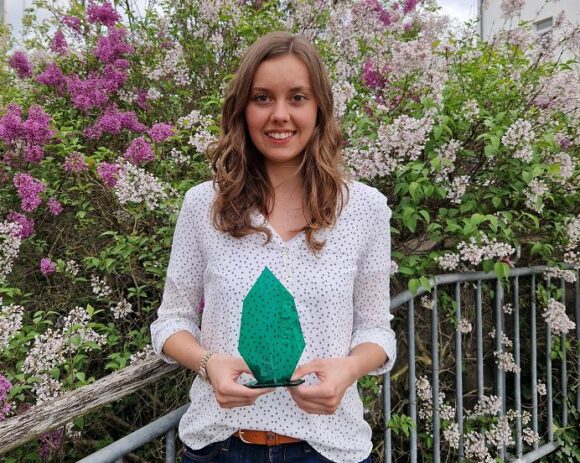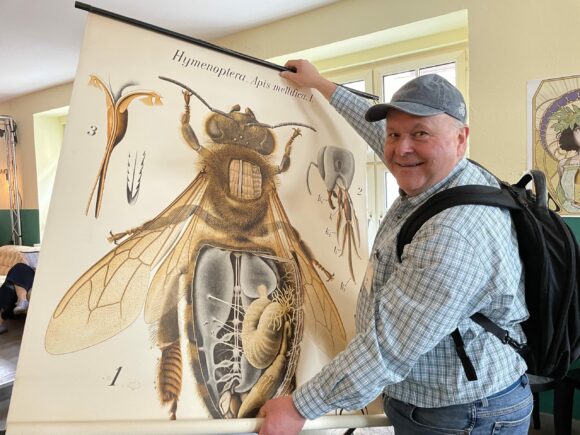The KLIPS research project funded by the Federal Ministry for Digital and Transport will be successfully completed at the end of March. The aim is to identify heat islands in cities and reduce or avoid them in the future. The AI-based information platform in KLIPS can be used to forecast and simulate the heat island effect in cities.

As a result of climate change, heat islands pose an increasing health risk for the urban population in Central Europe too and are now causing considerable infrastructure damage and costs, e.g. due to burst asphalt surfaces and deformed rails. Such heat islands can be reduced or avoided altogether with proactive measures. The KLIPS research project (AI-based information platform for the localization and simulation of heat islands for innovative urban and traffic planning) uses an information platform and a sensor network to measure heat islands and simulate the effects of possible measures using AI algorithms. Software AG is leading the research project as consortium leader. The research partners are ERGO Umweltinstitut GmbH, the German Aerospace Center, the Fraunhofer Heinrich Hertz Institute, the Institute for Information Systems at Hof University of Applied Sciences, the Leibniz Institute of Ecological Urban and Regional Development, the state capital Dresden, Pikobytes GmbH, terrestris GmbH & Co. KG, meggsimum (Büro für Geoinformatik Christian Mayer) and the city of Langenfeld as an associated partner.
Sensors for temperature and humidity
In the pilot cities of Dresden and Langenfeld, sensors were developed and installed to continuously measure the current temperature and humidity. To this end, the requirements of the pilot cities were first determined and possible use cases developed. After a successful test phase, around 300 sensors were installed at representative locations in Dresden and 80 in Langenfeld.

Since then, they have been providing measured values for temperature and humidity every minute. A data platform was developed to record, provide and visualize the sensor data and apps were made available to operate the measurement data. Focus areas were previously identified in workshops, expert interviews and technical discussions with the respective city administrations.
Data and analysis of heat islands
In addition to the sensor data, the project also drew on satellite data and existing databases from the pilot cities. These two sources provided information on weather (historical and current), climate, land cover, air pollutants and traffic, as well as digital elevation models and morphological information on buildings. Based on this data, detailed quantitative analyses could be carried out on the relationship between building development, sealing, transport infrastructure and urban warming.
AI-supported analysis for heat predictions
Several neural networks were regularly fed and trained with this data. AI-based methods were developed to model the relationship between urban structural parameters such as building development, land cover and green volume and the formation and characteristics of heat islands. These methods should enable urban planners to precisely record the effects of structural changes on heat development and integrate them into urban planning strategies. In addition, AI-based models were developed that enable a 48-hour forecast of heat development on hot summer days and can serve as a basis for heat action plans.
Demonstrator with integrated KLIPS services
KLIPS services, which can be used to access, process and display all calculated data, provide cities with measurement and forecast data that they can integrate into their own IT and urban planning via standardized geoinformation interfaces. To illustrate this, the project developed a demonstrator in which the KLIPS services are integrated. It offers various dashboards on which the measured air temperature and humidity, the heat index, the heat island effect and the temperature difference to the surrounding area can be queried at the current time and in a 48-hour forecast. The dashboards are web-based and accessible via a browser.
Legal assessment and data governance
The “Law in Sustainability, Compliance and IT” research group at Hof University of Applied Sciences provided intensive support for KLIPS as a legal research partner, ensuring that the implementation was legally compliant. As part of the project, the data used was legally evaluated in order to enable legally compliant use and provision as open data in the Mobilithek, the BMDV’s platform for open mobility data. In addition, a data governance concept was created, which serves to implement and document compliance with the legal requirements for data use. The first approaches to documenting data quality were identified, which significantly determine the liability for data-driven processes.
KLIPS transferable to all municipalities
“The special thing about KLIPS is that it not only provides a comprehensive overview of the current heat islands in the urban area, but also enables simulations of future heat islands with the help of AI processes,” emphasizes Christian Gengenbach, Vice President Research & Development at project coordinator Software AG.
This knowledge can be used to prevent the formation of heat islands in advance. The data obtained in the project can help many cities to deal with heat events in the future. This is because the findings and results of KLIPS are basically transferable to all municipalities.
Christian Gengenbach, Vice President Research & Development and Project Coordinator Software AG
Steffen Rietzschel, Head of the Office for Economic Development of the state capital Dresden, adds: “By combining AI and temperature forecasting, the KLIPS project has opened up a new field of activity for local authorities in particular. This should be further explored in follow-up projects on heat prevention.”
The KLIPS project is being funded by the Federal Ministry for Digital and Transport with a total of 2.3 million euros as part of the mFUND innovation initiative.
About the funding program
As part of the mFUND funding program, the BMDV has been supporting research and development projects relating to data-based digital innovations for Mobility 4.0 since 2016. The project funding is supplemented by active professional networking between stakeholders from politics, business, administration and research and the provision of open data on the Mobilithek. Further information can be found at www.mfund.de.







